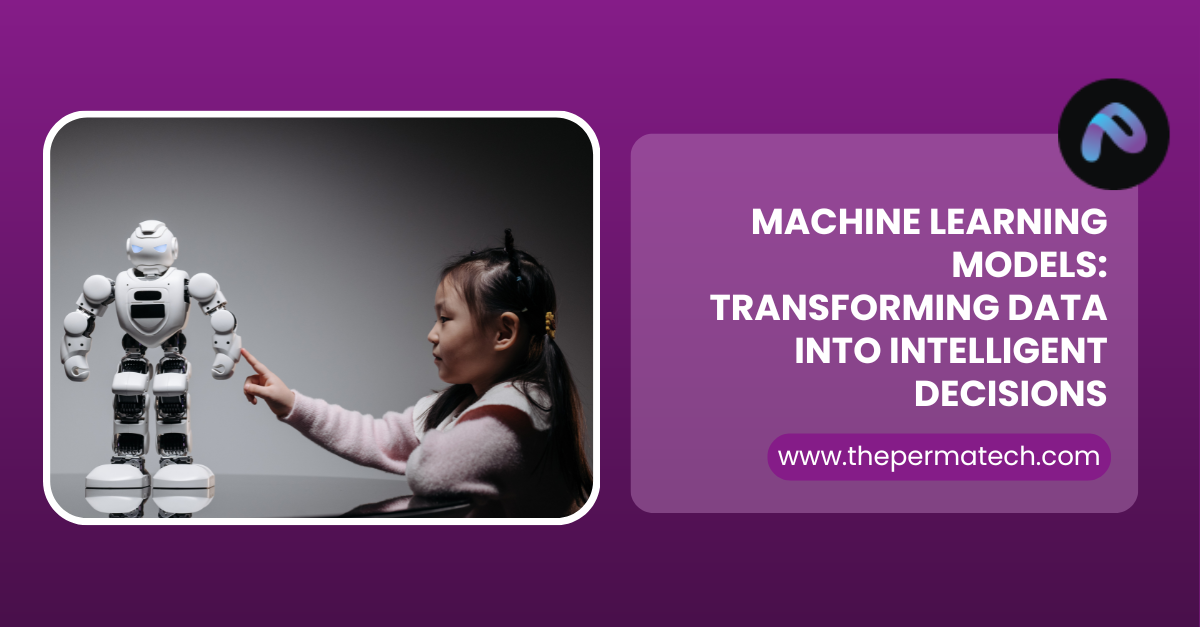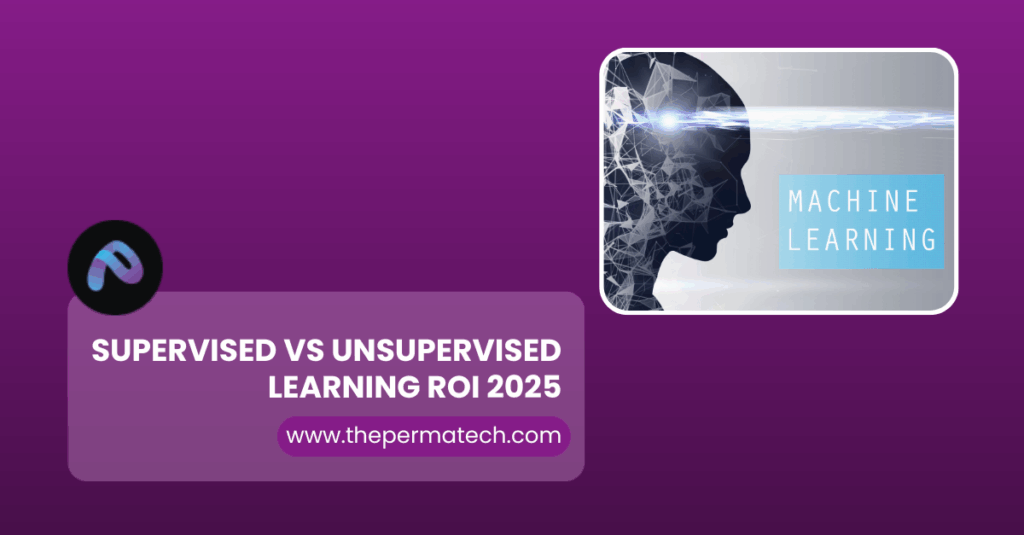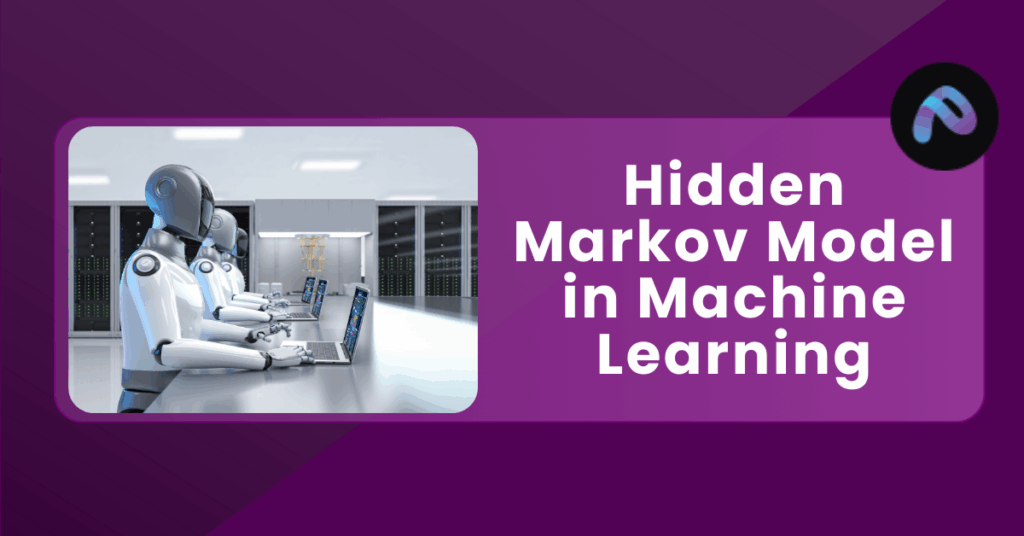Machine Learning (ML) models are the core engines powering today’s intelligent systems. These algorithms learn from data, identify patterns and make predictions enabling automation, precision and real time decision making. In 2025, ML drives innovations across industries from finance to healthcare, accelerating insights and optimizing performance. As organizations embrace advanced models like Transformers and Graph Networks, Machine Learning continues to shape the future of data driven intelligence and business transformation.
What Are Machine Learning Models?
Machine Learning models are algorithms that learn patterns from data and make predictions or decisions without being explicitly programmed. They enable systems to:
- Identify patterns from large datasets
- Adapt based on new input data
- Predict outcomes and optimize performance
These models form the foundation for AI applications in finance, healthcare, retail, manufacturing and beyond.
Categories of Machine Learning Models
| Type | Purpose | Examples | Key Algorithms |
| Supervised Learning | Learns from labeled data to predict outcomes | Fraud detection, email classification | Linear Regression, Decision Trees, SVM |
| Unsupervised Learning | Finds hidden structures in unlabeled data | Market segmentation, anomaly detection | K-Means, PCA, DBSCAN |
| Semi-Supervised Learning | Combines labeled and unlabeled data | Voice recognition, bioinformatics | Graph-based models, GANs |
| Reinforcement Learning | Learns by interacting with the environment | Robotics, game AI, supply chain optimization | Q-Learning, Deep Q-Networks (DQN) |
Most Popular Machine Learning Models in 2025
| Model | Primary Use Case | 2025 Benchmark Accuracy |
| Random Forest | Predictive analytics, classification | 92% |
| Gradient Boosting (XGBoost, LightGBM) | Forecasting, churn prediction | 94% |
| Deep Neural Networks (DNNs) | Image, text, and audio recognition | 96% |
| Transformers (BERT, GPT-based) | NLP, contextual understanding | 98% |
| Graph Neural Networks (GNNs) | Networked data, fraud analysis | 91% |
🔍 Insight: According to Gartner (2025), Transformer based architectures now power over 65% of enterprise AI deployments, driven by their ability to handle multimodal data.
Current Industry Trends (2025)
- Edge Machine Learning:
ML models are increasingly being deployed on edge devices for faster decision making ,reducing cloud latency by up to 45%. - Explainable AI (XAI):
As AI adoption grows, regulators demand transparency. XAI models can interpret why an algorithm made a specific prediction, improving trust in finance and healthcare sectors. - Federated Learning:
Enables decentralized model training while preserving data privacy. Adoption rose 40% YoY across fintech and healthcare in 2025. - AutoML (Automated ML):
Reduces manual effort by automating model selection and hyperparameter tuning,improving developer productivity by 35% (Forrester, 2025).
Analytical Data Snapshot
| Sector | Adoption Rate (2025) | Use Cases | Projected ROI (2026) |
| Finance | 89% | Credit scoring, risk analysis | 42% |
| Healthcare | 78% | Diagnostics, drug discovery | 37% |
| Retail | 84% | Dynamic pricing, recommendations | 48% |
| Manufacturing | 72% | Predictive maintenance | 33% |
Emerging Models Shaping the Future
- Large Multimodal Models (LMMs): Integrate text, image, and video inputs for richer understanding.
- Quantum Machine Learning (QML): Uses quantum computing to accelerate complex data analysis.
- Sparse Models: Reduce energy consumption in AI training by 60–70%.
Business Benefits of ML Integration
Operational Efficiency: Automates repetitive tasks.
Predictive Insights: Improves forecasting accuracy.
Cost Reduction: Cuts operational costs by up to 25%.
Customer Personalization: Delivers tailored experiences that boost retention.
Companies using ML driven decisioning systems report 3× faster time to market for new digital products (IDC, 2025).
Challenges Ahead
While ML’s potential is vast, challenges persist:
- Data bias impacting fairness
- Model drift due to dynamic real world data
- Compute and energy costs
- Ethical governance for automated decisions
Organizations must build frameworks for continuous monitoring, bias mitigation and responsible AI use.
Conclusion
Machine Learning (ML) models are the core engines powering today’s intelligent systems. These algorithms learn from data, identify patterns and make predictions enabling automation, precision and real time decision making. In 2025, ML drives innovations across industries from finance to healthcare, accelerating insights and optimizing performance. As organizations embrace advanced models like Transformers and Graph Networks, Machine Learning continues to shape the future of data driven intelligence and business transformation.





